Improving Payroll Compliance
.jpg)
A common fear of undertaking a payroll review is that it will lead to a remediation project that will cost more to conduct the project than the actual pay variance itself. Although sometimes remediations are unavoidable, there are steps all businesses can take to improve their compliance and avoid a remediation project in the future.
The new approach is to conduct forward looking pay reviews that aim to provide businesses with accurate insights into their payroll data so they can make proactive decisions to continuously improve their compliance.
At PaidRight, our ongoing reviews focus on what areas of employee pay are currently stopping you from proving your compliance, rather than telling you this is all wrong and you must treat what you are currently doing as incorrect.
Outlining where you may be at risk of under or overpayment allows you to tackle key issues causing a variance, allowing you to be more confident and comfortable in your ability to prove compliance.
What you achieve through ongoing reviews
PaidRight’s ongoing reviews will provide you with regular insight into the risk areas that would stop you from proving your compliance. This may be due to how and what data you are collecting, how your business is set-up from a rostering perspective or how your payroll systems have been configured.
Each review will show you the outcome of business changes you have made and how that has impacted your compliance score, as well as highlighting the current issues contributing to a risk of variance in pay.
Three changes you can make to improve your payroll compliance
- What data you collect, and how you collect it
Businesses payroll data will never be perfect. The way that payroll systems are configured, managed and used have continuously led to errors in how payroll data is collected and stored.
What ongoing reviews allow is for you to see what data is not being collected, this provides you with the ability to make changes to how you then collect and store data going forward.
An easy example that we have seen is a customer identifying they aren’t recording when unpaid breaks are occurring during shifts. Ultimately this is not compliant, and they were able to introduce better controls to ensure their employees were punching in and out of unpaid breaks.
- How you set-up and manage your rosters (roster principles)
How you set-up and manage your rosters is a common example of how customers have changed their processes to see an increase in their compliance score.
Many retail customers have found that they are having to pay too much in overtime (OT) payments to employees than they actually need to.
So what we have now seen is customers changing their roster principles to ensure employees always receive the correct consecutive days off in accordance with clause 15.7(d) in the General Retail Industry Award.
For companies dealing with numerous stores across the county, it may also lead to changing to centralised rostering, where the same roster principles are used across the entire business to help with monitoring and tracking compliance.
- How you configure a system / interpret and program a clause
We have seen businesses change the configuration of their payroll systems to increase their compliance and pay their employees more accurately.
An easy example is when a junior employee has a birthday, leading to an increase in rates. In one of the earlier reviews, it was pointed out to the customer that the juniors rate of pay didn’t increase until the following pay period after their birthday.
The customer took this information and made some adjustments to how their system is set-up and were able to change it. This meant junior rates increased on the day of their birthday, not the following pay period.
How these changes can benefit you
Having a level of visibility into your payroll data will provide you with the information to make informed decisions on how to improve your compliance.
Doing this on a quarterly basis, from our experience, gives you the best opportunity to identify which areas are of most importance and the appropriate time to build strategies and implement them into the business.
Reviewing how these changes have impacted your compliance score from quarter to quarter, will allow you to stay on top of your compliance and be as confident as possible.




.png)


.png)













.webp)

.webp)